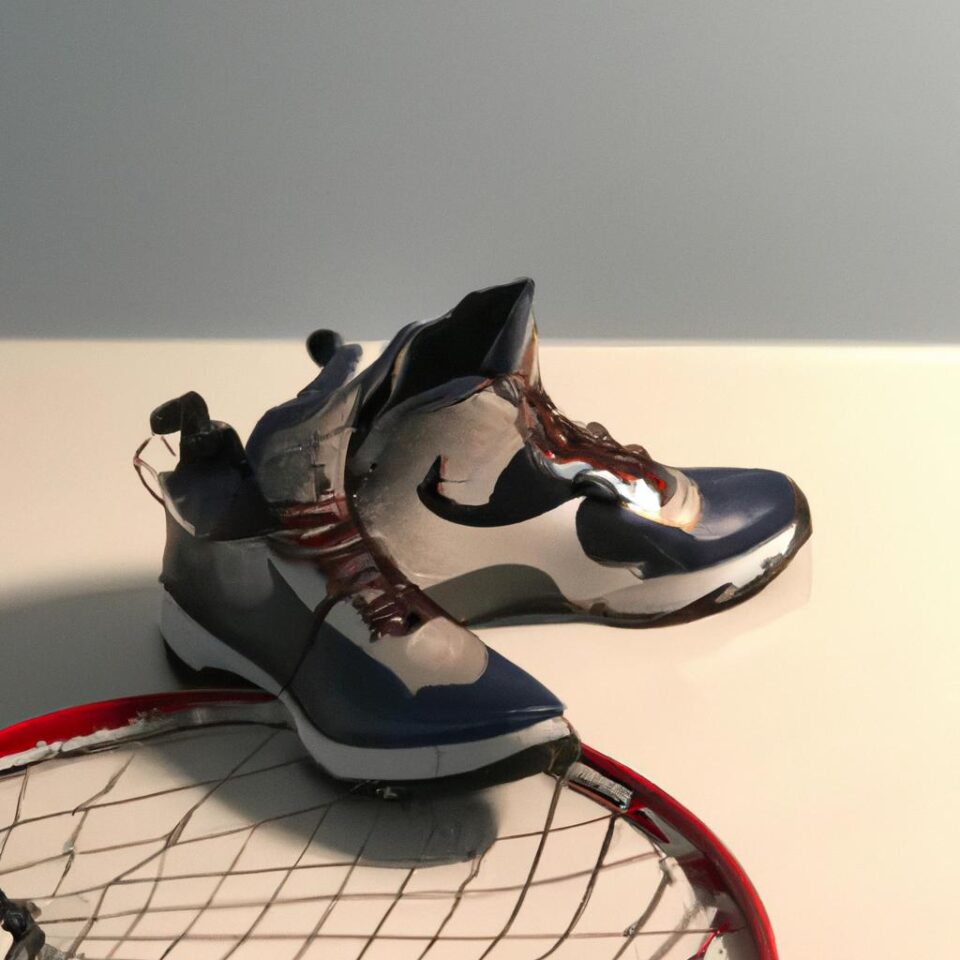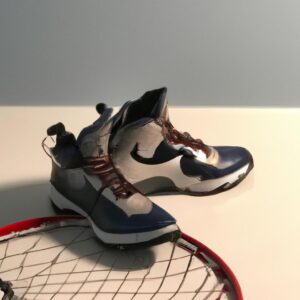Introduction: Defensive Techniques in Basketball
Defensive techniques in basketball are essential to play successful and consistent defense. Without strong defence, teams will struggle to win games or even compete. Therefore, it’s important to know and understand how to apply defensive techniques. This guide will help you learn the fundamentals of defensive techniques and the different strategies you can use to shut down opponents and create turnovers.
Defending in the Half Court
Defensive plays in the half court can be key to shutting down opponents and creating turnovers. When defending, there are a few strategies that players can use to stop offensive progress.
- Blocking opponents shots – Make sure you are in proper position to take away an easy shot for the other team.
- Contesting shots – Hoping to make the other team miss with your length and athleticism.
- Secure key rebounds – Fight hard on the glass to give your team back the ball.
When defending against pick-and-rolls, it’s important to be aware of the actions of both the ball-handler and the screener. It’s best to guide the ball-handler away from the middle of the floor so they are not able to go towards the basket. When defending isolations, it’s important that each player is able to remain attentive and stay in front of their man.
Defending the Wing
Having a player on the sidelines is an important part of any basketball defense. This player needs to be prepared to close out on shooters, defend against drives, and help with double teams. There are several different approaches to defending on the wing, depending on the type of offensive player you’re dealing with.
If you’re dealing with a shooter, the defensive priority should be to contest the jump shot without fouling. When approaching the shooter, you’ll want to stay close, keep your arms up, and time your close-out as late as possible to minimize the open space. If the shooter puts the ball on the floor, your goal should be to contain them and force them to the less dangerous areas away from the basket.
When dealing with a ball-handler, you’ll want to stay in between the offensive player and the basket. You’ll also need to stay active by using your feet and be ready to move with the ball-handler to stay in front. Be sure to keep your arms up and actively try to deny the ball-handler access to the paint.
Denying the 3-Point Line
Denying access to the 3-point line is an important defensive technique in basketball, as it can make it more difficult for the opposition to score from long range. When defending against opponents trying to take a three-pointer, there are a few key strategies you can implement.
One of the most effective tactics is to close out and maintain good body position. Closing out defensively involves increasing the space between the opponent and the goal, using your feet and hands to impede their movement. Keeping your defensive stance low and wide will help you cover more ground and stay with your opponent. Additionally, having a hand up while closing out will help to further block the shooter from taking an open shot.
It’s also important to make sure that you force the offensive player to their weak side. By doing this, it will increase the chances that the shooter takes a difficult shot or has to pass the ball instead of shooting. As such, being aware of the strengths and weaknesses of the shooter is critical when denying the 3-point line.
Finally, you should also be aware of screens that can be used to free up the shooter. Being alert and staying in front of the offensive player while communicating with your teammates is essential in order to ensure the shooter is not able to get an open look.
Switching Defense
Switching defense is a tactic used by teams to disrupt offensive progress when faced with one-on-one scenarios. In practice, it involves quick recognition of certain formations and switches between players to quickly disrupt the offensive player’s flow. It forces the offense to adjust its plan by making sudden changes to their formation. This can cause confusion and lead to mistakes, resulting in turnovers.
In order to make switching defense effective, all defenders must be able to read the situation correctly and anticipate potential switches. The team must also be comfortable and confident in their ability to switch quickly and effectively. Finally, they need to be aware of any mismatches that can occur from the switch and be prepared to handle them.
Pick and Roll Defense
The pick and roll is a common play used by offenses to create open shots for players or get them closer to the basket. To defend against this, teams can employ different tactics such as hedging, drop coverage and traps.
Hedging
Hedging involves both defenders on the ball and off of it coming together to deny any forward progress for the offense. This tactic works best when there is little space and the two defenders can momentarily delay the offensive team from getting to the desired spot on the court.
Drop Coverage
This is when the off-ball defender helps out while the on-ball defender stays near the ball. The off-ball defender then retreats back to their original position and the on-ball defender maintains close pressure on the ball handler. This tactic slows down an offensive attack but does not completely deny it.
Traps
The trap is a defensive tactic that requires two defenders to come together and aggressively double team the player with the ball. It is often used to force a turnover or to deny a clear passing lane to the offense. This is the most effective way to disrupt a pick and roll play.
Closing Out
When defending against the perimeter, proper execution of a close out is essential. Not only does it prevent the easy shots from the defenders, but it also helps create turnovers and disrupts the flow of the offense.
To effectively close-out, the defender must maintain a balanced stance and be aware of their surroundings. Proper footwork is also necessary to properly contest shots, move around screens, and cover the area of the court quickly.
The defender should leap into the air as they move towards the shooter, with the arms extended outward to direct the offensive player away from the basket. This will force them to move away from the basket and give the defender more time to imply defensive pressure.
Ball Pressure and Deflection
When it comes to defensive techniques, putting pressure on your opponent is key. Ball pressure looks to disrupt the offensive player’s drive to the basket by simply being in their way as they dribble or attempt a shot. Directly pressing up against the dribbler can cause them to fumble the ball which makes it easier for the defender to snatch it up and get possession.
Deflections come into play when an offensive player attempts to pass the ball. A defender can attempt to get in the way of the pass by positioning themselves in between the passer and receiver. If done successfully, the interference will likely cause the ball to be deflected off target.
Though these techniques can be effective, it is important to keep in mind that over-pressuring a dribbler can result in a foul. It is therefore important to understand when to apply pressure and when to back off. Timing is key.
Positioning: Chasing Offensive Screens
Defending against offensive screens is an important part of any successful defensive strategy. By chasing the moving screen, defenders can limit the options available to the offensive player and increase the chance of regaining possession. When defending against a screen, there are three main strategies that can be employed – chase and force, fight through, or go under.
Chase and Force
The first option is to chase and force the offensive player away from the screen. The defender should try to keep a good distance between themselves and the point of the screen, and use their body to force the offensive player out of their desired pocket. This strategy is most successful when used against smaller players or those with poor dribbling ability.
Fight Through
The second option is to fight through the screen set by the offensive player. This involves staying close to the screener and using quick footwork to get around the screen without being affected by it. Again, this strategy works best against weak players or those who are easily knocked off balance.
Go Under
The third option is to go under the screen and run across it, forcing the offensive player to go in the opposite direction. This technique requires good judgement and timing, as the defender must decide when the time is right to make their move. It is usually most effective when used against taller players, as they are more likely to be affected by a low center of gravity.
Defensive Rebounding
Defensive rebounding is an essential skill for any basketball player. It involves positioning yourself in the right space in order to be in the best position to retrieve a missed shot. When positioning yourself, it’s important to keep in mind distance from the net and the positioning of your opponents.
In order to defend the net efficiently, you need to anticipate where the opponent is going to make their shot and position yourself as close as possible to the basket. This will give you a better chance of getting the rebound before your opponent does. Additionally, try to position yourself behind any of your opponents that are lined up for the rebound. You want to make sure that none of your opponents are able to get to the ball before you.
The key to successful defensive rebounding is to be aware of your surroundings and make sure you have good timing and anticipation skills. With practice, you’ll learn how to position yourself correctly and be a major contributor to your team’s success.
Creating Turnovers
Turnovers occur when the offensive team loses possession of the ball to the defensive team. In order to create turnovers in a basketball game, the defense needs to pressure the opponent and disrupt their passing or dribbling. Traps, full court press, and half court press are all types of defense that have been used to force turnovers.
Traps are when two defenders double team the ballhandler and force them into a corner. This type of defense put the ballhandler under immense pressure and can force them into making a costly mistake. Full and half court press involve putting more players on the court to actively pursue the ballhandler and intercept passes. If timed correctly, these strategies can be effective at denying the offense clean possession of the ball.
It is important for the defense to be aggressive but smart with their tactics. Players need to work together and communicate in order to successfully create turnovers while also staying organized on the court. With the correct approach, turnovers can be an effective way to disrupt the momentum of the offense and gain possession of the ball.
Conclusion
Defensive techniques in basketball can help shut down opponents and create turnovers. By blocking shots, contesting offensive progress, securing rebounds, denying access to the 3-point line, switching defense, hedging, trapping, dropping, applying pressure on the dribbler, moving to chase offensive screens and defensive rebounding, it is possible to turn the tide of a game. All these skills require practice, but through mastering them you’ll be well on your way to becoming an excellent defensive player.
comments: 0

